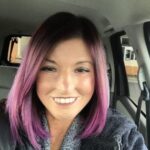PHILADELPHIA—Amy Gietzen started feeling the pain when she was 19. Her forearms, elbows, wrists and fingers were constantly swollen and sensitive. Six months later, she saw a doctor and was diagnosed with systemic diffuse scleroderma—a particularly hard-to-manage rheumatic disease with wide-ranging effects.
Ms. Gietzen, who spoke at ACR Convergence 2022 and is a public speaker, patient advocate and writer, gave testimony on the profound life change that the disease wrought and about the transformation that can happen with well-executed collaborative care. She and two other people with rheumatic diseases shared their experience and the avenues they’ve found to cope—and that have, along the way, boosted others as well.
After her diagnosis, Ms. Gietzen, who lives in Buffalo, N.Y., was soon diagnosed with interstitial lung disease, hypertension and heart complications.
“My skin became hard and tight, my hands contracted inward, causing fingertip sores and ulcerations, which ultimately led to me having some self-amputations of my fingertips,” she said. “My experience with doctors, more specifically scleroderma specialists, was extremely limited locally.
“I felt lost and almost out of control, like my disease was overtaking my body, like I couldn’t catch a break,” she added.
Finding a Care Team
Her eyes opened, she said, when she was asked in 2016 to participate in a patient-centric interprofessional event (IPE) through the Ann Steffens Scleroderma Foundation in which patients would help educate an array of medical professionals—nurses, pharmacists, physical therapists—about scleroderma. This kind of team was what she’d been yearning for.
Eventually, she managed to find a scleroderma collaborative care team of her own.
“Once I did that, it felt like I was coming home—it changed the trajectory of disease,” said Ms. Gietzen, who writes a column about her experiences called “Staying Alive with Scleroderma.”
In 2019, she had a heart event and needed an implantable cardioverter defibrillator.
“As time passed, my symptoms were monitored by highly trained scleroderma professionals,” she said. “They provided continual communication through multiple doctor assessments, offering a keen sense of security.”
This approach, she said, “gave me complete confidence in my team and it allowed me to take an active role, which boosted my confidence even more.”
She said she felt a deep sense of renewal once her care became comprehensive and open to her input and involvement.
“Finding my care team gave me hope,” she said, “that there is a way to gain back the life that scleroderma took from me, that I can take an active role in decision making, that I can take my control back.”




